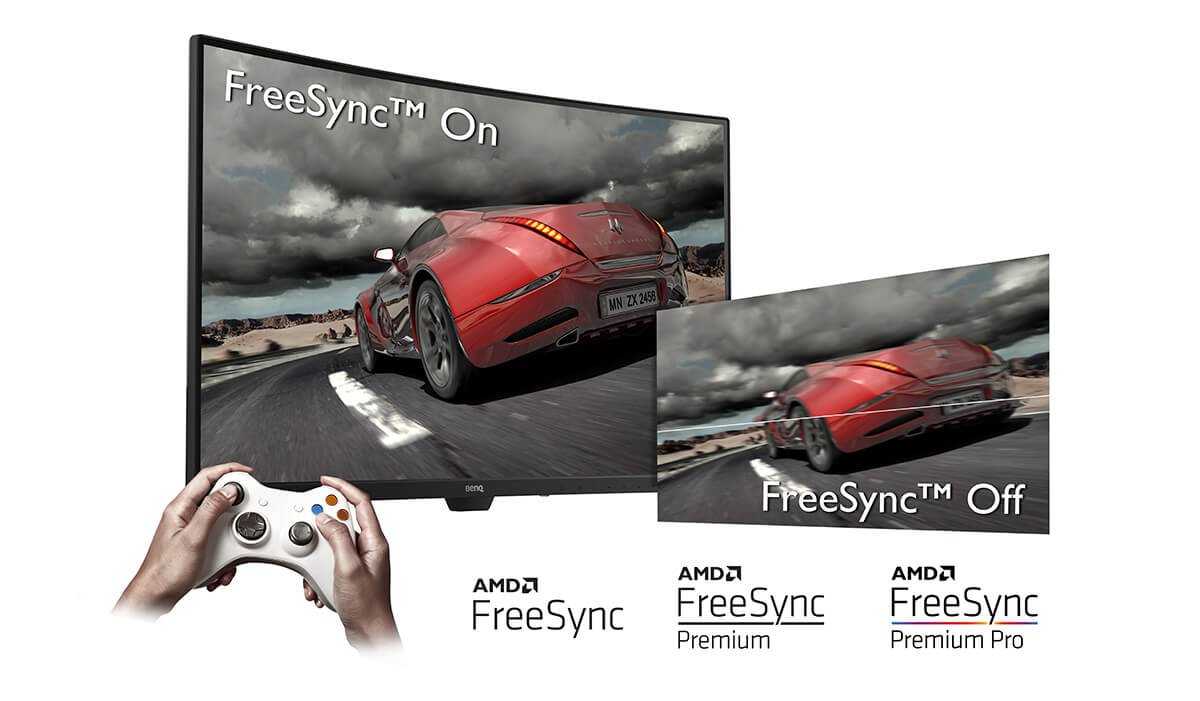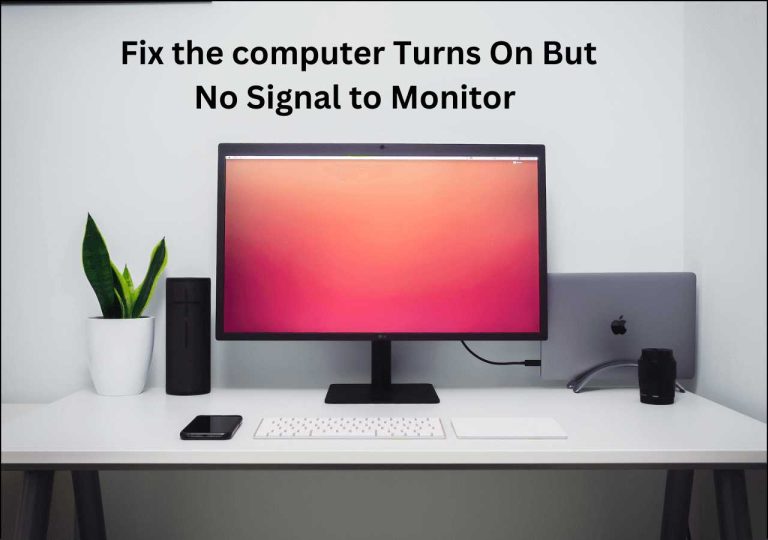Freesync is a game-changer for gamers, ensuring smooth and tear-free gameplay by synchronizing your monitor’s refresh rate with your graphics card. It essentially eliminates screen tearing and stuttering, making your gaming experience more seamless and immersive.
In short, Freesync is a technology that helps your gaming monitor work in harmony with your graphics card to deliver a fluid visual experience. It dynamically adjusts the display’s refresh rate to match the frame rate output by your GPU, reducing artifacts and lag during fast-paced action. This makes gameplay smoother, especially in scenes with rapid movements. If you’re serious about gaming, understanding what Freesync does can help you choose the right monitor for optimal performance, giving you the edge over the competition.
When it comes to gaming, nothing breaks immersion more than screen tearing or lag. That’s where Freesync comes in—developed by AMD, it ensures that your monitor’s refresh rate and your GPU’s output are perfectly synchronized. This means you’ll enjoy crisp visuals with minimal latency, making your gaming sessions far more enjoyable. Freesync is particularly beneficial for anyone looking to maximize their gaming experience without investing in expensive hardware, as it offers a cost-effective way to improve visual quality and responsiveness. Whether you’re a casual gamer or a competitive eSports enthusiast, understanding and utilizing Freesync can significantly enhance how you see and react to the virtual battlefield.
What Does FreeSync Mean on a Gaming Monitor
Understanding the Basic Concept of FreeSync
FreeSync is a technology that helps make gaming visuals smoother. It works by syncing the monitor’s refresh rate with the graphics card’s frame rate. This prevents screen tearing and reduces distracting artifacts during gameplay.
What Is Screen Tearing and Why Is It a Problem?
Screen tearing happens when the monitor’s refresh rate and the graphics card’s frame rate do not match. It causes horizontal lines or tearing across the screen. This can make images look jumbled and disrupt the gaming experience.
How FreeSync Solves Screen Tearing
FreeSync dynamically adjusts the monitor’s refresh rate to match the graphics card’s frame rate. This synchronization eliminates tearing and provides smoother visuals. Players enjoy a more seamless and enjoyable gaming session.
How Does FreeSync Work Technically?
FreeSync uses a technology called variable refresh rate (VRR). It allows the monitor to change refresh rates on the fly, depending on the frame rate sent by the GPU. This process ensures that frames are displayed smoothly without tearing.
Key Benefits of FreeSync on Gaming Monitors
- Reduced Screen Tearing: Creates a smoother visual flow during fast-paced action.
- Lower Input Lag: Provides quicker response times, which is vital for competitive gaming.
- Less Stuttering: Minimizes choppy movements caused by frame rate fluctuations.
- Enhanced Visual Quality: Offers clearer, more consistent images during gameplay.
Compatibility and Requirements
Compatible Graphics Cards and Monitors
FreeSync is mainly compatible with AMD graphics cards and monitors that support the technology. Some newer NVIDIA graphics cards also work with FreeSync via G-SYNC Compatible mode. Ensure both the GPU and monitor list FreeSync support for optimal performance.
System Requirements
A compatible GPU, FreeSync-enabled monitor, and the appropriate cable connection (like HDMI or DisplayPort) are needed. It is also important to keep graphic drivers updated for the best experience.
Different Types of FreeSync Technologies
FreeSync Standard
This is the basic version, offered on most FreeSync monitors. It provides variable refresh rate technology for smoother gameplay.
FreeSync Premium
This version adds features like low latency and low framerate compensation (LFC). It is ideal for fast-paced competitive games.
FreeSync Premium Pro
The highest tier, offering exceptional color accuracy and HDR support along with variable refresh rate. It enhances both visual fidelity and gaming performance.
Comparison with Other Technologies
| Feature | FreeSync | NVIDIA G-SYNC |
|---|---|---|
| Cost | More affordable | More expensive |
| Compatibility | Primarily AMD, some NVIDIA support | Exclusive to NVIDIA GPUs |
| Performance | Effective for most gaming scenarios | Very smooth, but at a higher price |
Choosing the Right FreeSync Monitor
When selecting a monitor, consider the following:
- Refresh rate: Look for at least 75Hz or higher for smoother gameplay
- Resolution: Higher resolutions like 1440p or 4K are better for detailed visuals
- Response time: Lower response times reduce motion blur
- Features: HDR support, color accuracy, and additional gaming features
Using FreeSync Effectively
To get the best experience:
- Enable FreeSync in monitor settings
- Activate FreeSync in your graphics card control panel
- Use compatible cables like DisplayPort or HDMI
- Keep drivers updated to avoid compatibility issues
Potential Limitations and Common Issues
Although FreeSync provides many benefits, some users may encounter issues such as:
- Flickering or stuttering during certain scenes
- Limited support on some monitors or GPUs
- Compatibility issues with older graphics cards
- Reduced effectiveness at very low frame rates
Addressing these often involves updating firmware or driver settings, or choosing a monitor with better FreeSync capabilities.
Summary: Why FreeSync Matters for Gamers
FreeSync enhances the gaming experience by delivering smoother visuals and reducing disruptions like tearing and stuttering. It is an affordable way to improve gameplay, especially for those who play fast-paced games. By understanding what FreeSync means and how it works, gamers can make informed choices about their equipment.
Choosing a FreeSync-enabled monitor can significantly improve your gaming sessions. It offers a balance of affordability and performance, making it a popular choice among gamers. Knowing how to set up and optimize FreeSync ensures you get the most out of your gaming hardware.
What are Gsync and Freesync?
Frequently Asked Questions
How does FreeSync improve gaming visuals on a monitor?
FreeSync synchronizes the monitor’s refresh rate with the graphics card’s frame rate, reducing screen tearing and minimizing stuttering. This results in smoother, more consistent visuals during gameplay, particularly in fast-paced scenes, enhancing the overall gaming experience.
Can FreeSync reduce input lag in gaming sessions?
While FreeSync primarily targets visual synchronization, it can also help decrease input lag by eliminating the need for the monitor to wait for a new frame before updating the display. This leads to more responsive interactions, especially noticeable in quick, reactive games.
Is FreeSync compatible with all gaming consoles?
FreeSync is mainly designed for PCs with compatible AMD graphics cards. However, some newer gaming consoles like Xbox Series X and Series S support FreeSync, allowing gamers to benefit from smoother visuals when connected to compatible monitors. Compatibility depends on both the console and the monitor model.
Do I need a specific graphics card to use FreeSync?
You need an AMD graphics card that supports FreeSync technology to utilize its benefits. While some AMD cards offer extensive FreeSync support, not all models may be compatible. It’s important to check your graphics card specifications and ensure your monitor also supports FreeSync for optimal performance.
What are the differences between AMD FreeSync and NVIDIA G-Sync?
Both technologies aim to synchronize display refresh rates with GPU outputs to prevent screen tearing. FreeSync generally offers a more affordable solution and works over standard DisplayPort and HDMI connections, while G-Sync often requires proprietary hardware in the monitor, which can be more expensive. Compatibility also varies, with each technology optimized for their respective GPU brands.
Final Thoughts
Freesync reduces screen tearing and input lag, providing a smoother gaming experience. It syncs the monitor’s refresh rate with the graphics card’s frame rate in real-time. This technology helps gamers enjoy fluid visuals without distractions.
In summary, what does freesync mean on a gaming monitor? It signifies a feature that improves gameplay by delivering seamless visuals and minimal lag, making your gaming sessions more enjoyable.
I’m passionate about hardware, especially laptops, monitors, and home office gear. I share reviews and practical advice to help readers choose the right devices and get the best performance.




